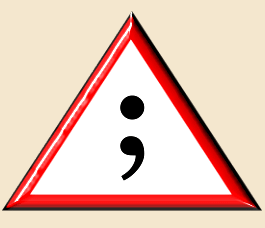Semicolons; Beware!
Published on August 21, 2012
If you read the title for this post and wished to call me out on misuse of the semicolon (in a post about semicolons), then save yourself a stamp (or a few bits in an email) and be assured that I know how to use it. At least I thought I did until I reviewed a short essay for a co-worker and found rampant instances of semicolon misuse. As soon as I encounter a grammar or usage error like this, I find myself doubting my experience, my degree (in English), and my reputation as a Tech Comm Queen. In a rush of anxiety, I wonder, wait, is that use of the semicolon correct? 
Here is an example of the offense: For those that want to get into the short-sell market and make a lot of money; we offer discounted brokerage services and share a passion for dodging the SEC.
Let me assure you that the example sentence is fiction (I wrote it), but the misuse of the semicolon is very real. Unfortunately, many people make this mistake, thinking that an introductory clause should be followed immediately by some punctuation mark, and maybe a semicolon fits the bill. It most definitely does not. The sentence demands a comma after the introductory clause, nothing more.
The semicolon is a wonderful diacritical mark (just ask Victor Borge), but it is best used to separate two independent clauses that might be otherwise linked with a coordinating conjunction, such as “and” or “but.” If you want to test your usage, just break the sentence into two parts. Can both parts stand alone as complete sentences, each with a subject and a verb? My example would not withstand the test, and that is why a semicolon is not correct.
If you want more guidance on semicolon usage, then I recommend The Oatmeal, who has explored punctuation and other usage questions in comics that are informational, irreverent, and sometimes offensive. Semicolons. Beware!

